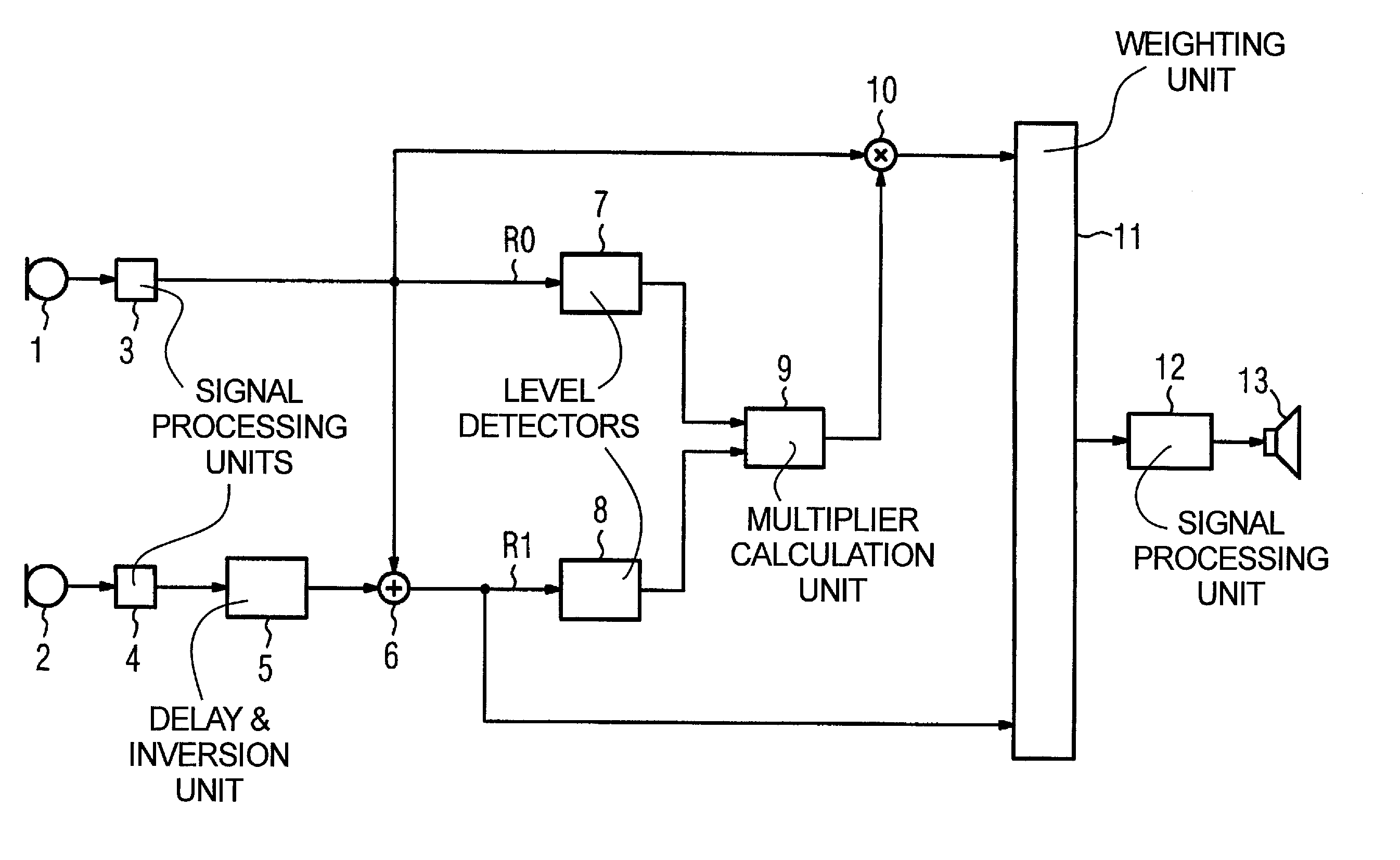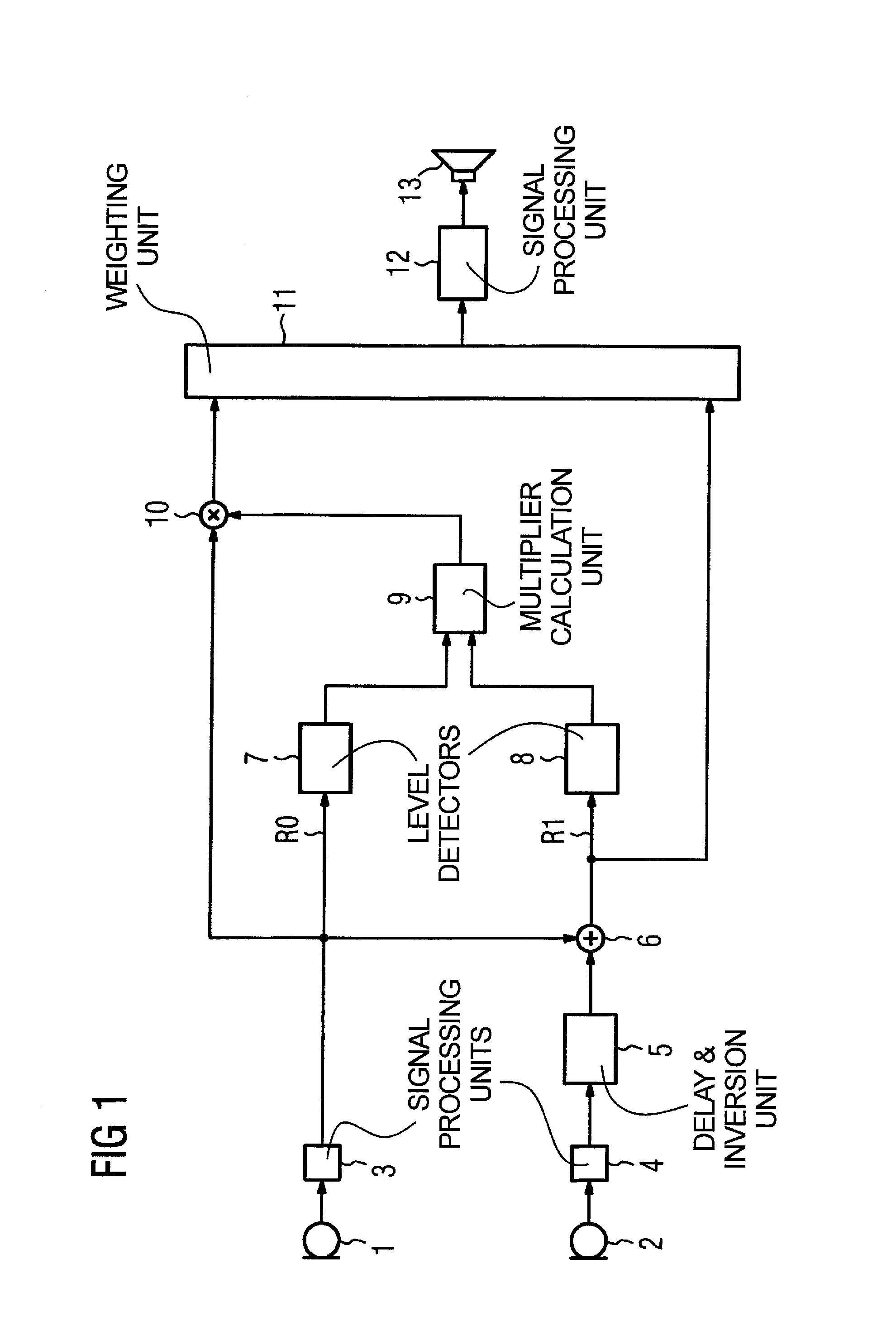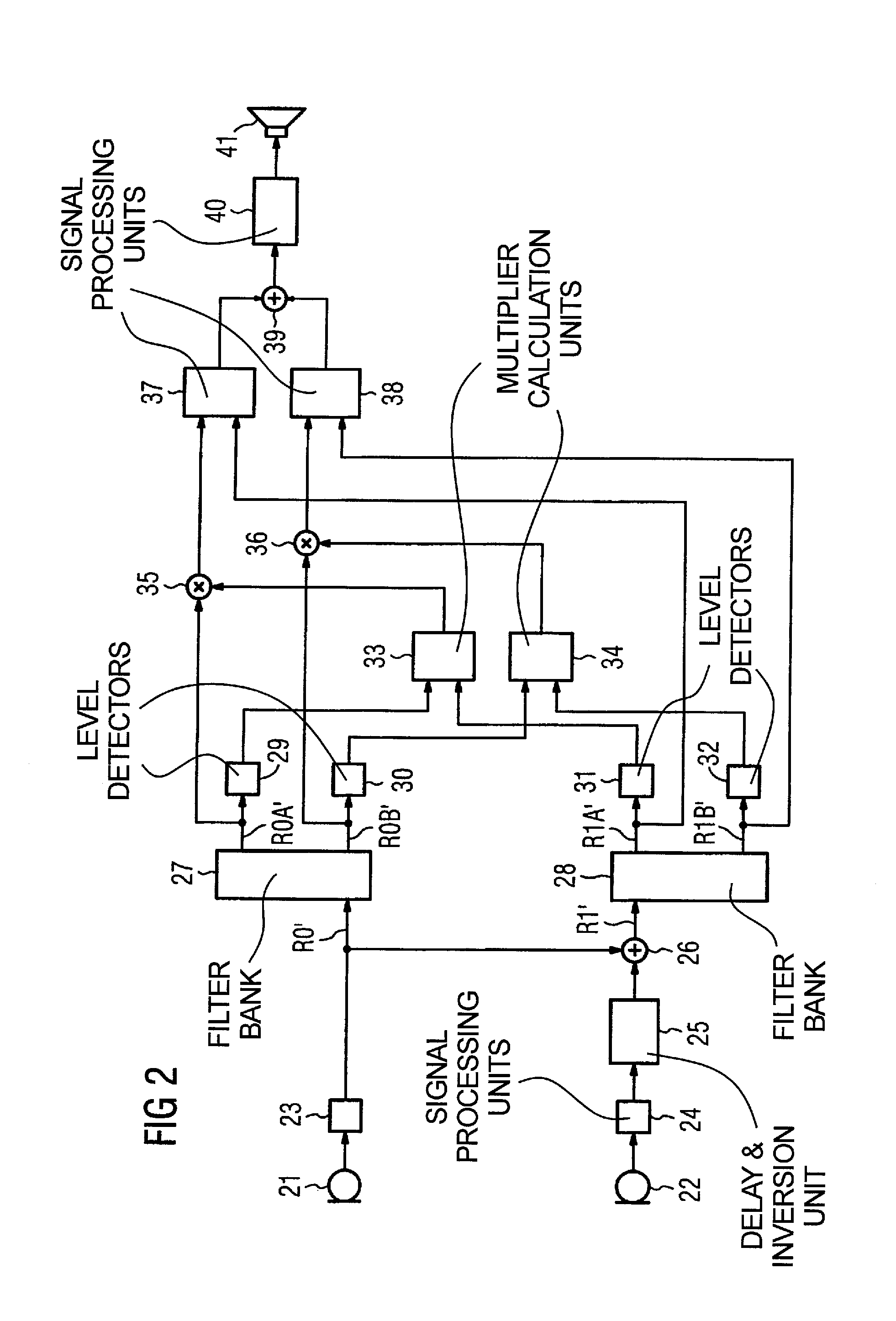Hearing aid and operating method with switching among different directional characteristics
a technology of switching between directional characteristics and hearing aids, which is applied in the direction of transducer circuits, transducer casings/cabinets/supports, microphones, etc., can solve the problems of sudden level changes, artefacts, and noise that is present in the low frequency rang
- Summary
- Abstract
- Description
- Claims
- Application Information
AI Technical Summary
Benefits of technology
Problems solved by technology
Method used
Image
Examples
Embodiment Construction
[0024]FIG. 1 shows a simplified block diagram of a hearing aid having two omnidirectional microphones 1 and 2. The microphone signals produced by the microphones 1 and 2 are first supplied to respective signal pre-processing units 3 and 4 wherein, for example, pre-amplification and A / D conversion of the electrical output signals from the microphones is undertaken. Delaying and inverting of the microphone signal produced by the omnidirectional microphone 2 take place in the delay and inversion unit 5, followed by addition to the microphone signal, R0 that originates from the microphone 1 in the adder 6. This results in the microphones 1 and 2 forming a directional microphone unit 1, 2 with a first-order directional characteristic, from which the microphone signal R1 is produced. According to the invention, level detectors 7 and 8, respectively, by means of which the signal levels of the respective microphone signals R0 and R1 are determined, are connected in the respective microphone...
PUM
 Login to View More
Login to View More Abstract
Description
Claims
Application Information
 Login to View More
Login to View More - R&D
- Intellectual Property
- Life Sciences
- Materials
- Tech Scout
- Unparalleled Data Quality
- Higher Quality Content
- 60% Fewer Hallucinations
Browse by: Latest US Patents, China's latest patents, Technical Efficacy Thesaurus, Application Domain, Technology Topic, Popular Technical Reports.
© 2025 PatSnap. All rights reserved.Legal|Privacy policy|Modern Slavery Act Transparency Statement|Sitemap|About US| Contact US: help@patsnap.com



